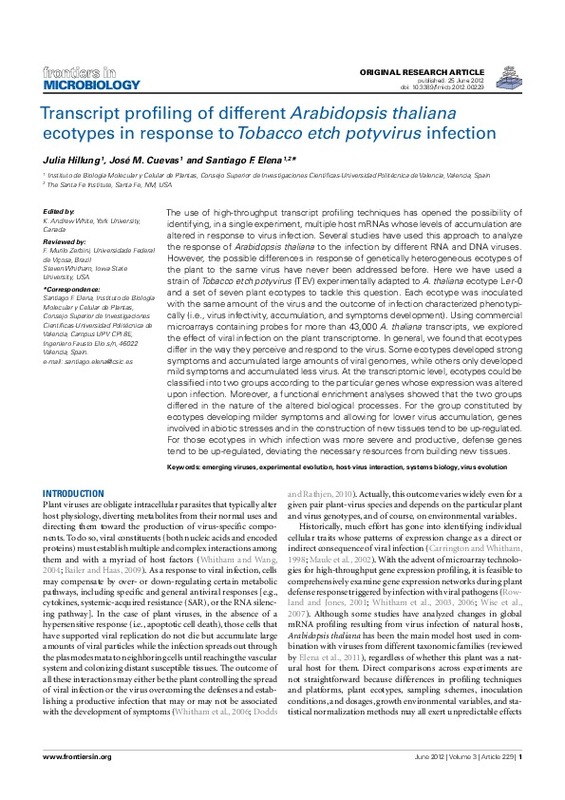JavaScript is disabled for your browser. Some features of this site may not work without it.
Buscar en RiuNet
Listar
Mi cuenta
Estadísticas
Ayuda RiuNet
Admin. UPV
Transcription profiling of different Arabidopsis thaliana ecotypes in response to Tobacco etch potyvirus infection
Mostrar el registro completo del ítem
Hillung, J.; Cuevas Torrijos, JM.; Elena Fito, SF. (2012). Transcription profiling of different Arabidopsis thaliana ecotypes in response to Tobacco etch potyvirus infection. Frontiers in Microbiology. 3(229):1-9. https://doi.org/10.3389/fmicb.2012.00229
Por favor, use este identificador para citar o enlazar este ítem: http://hdl.handle.net/10251/67743
Ficheros en el ítem
Metadatos del ítem
| Título: | Transcription profiling of different Arabidopsis thaliana ecotypes in response to Tobacco etch potyvirus infection | |
| Autor: | Hillung, Julia Cuevas Torrijos, Jose Manuel Elena Fito, Santiago Fco | |
| Entidad UPV: |
|
|
| Fecha difusión: |
|
|
| Resumen: |
The use of high-throughput transcript profiling techniques has opened the possibility of
identifying, in a single experiment, multiple host mRNAs whose levels of accumulation are
altered in response to virus infection. ...[+]
|
|
| Palabras clave: |
|
|
| Derechos de uso: | Reserva de todos los derechos | |
| Fuente: |
|
|
| DOI: |
|
|
| Editorial: |
|
|
| Versión del editor: | http://dx.doi.org/10.3389/fmicb.2012.00229 | |
| Código del Proyecto: |
|
|
| Agradecimientos: |
We thank Francisca de la Iglesia, Javier Forment, and Maria A. Martinez-Godoy for excellent technical assistance; Miguel A. Perez-Amador and Francisco Vera for guidance in the use of Agilent microarrays; and Guillermo ...[+]
|
|
| Tipo: |
|








